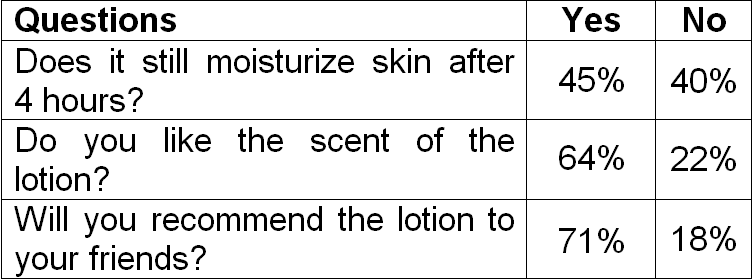ADJACENT ANGLES WORKSHEET
Question 1 :
What are adjacent angles? Give an example.
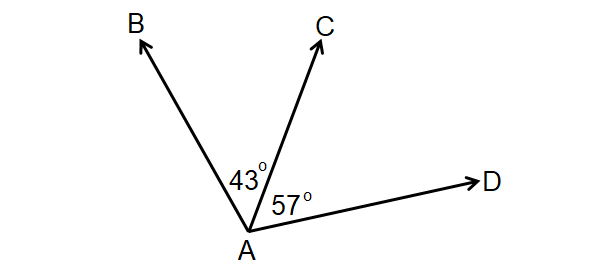
Questions 2-3 : Identify the two pairs of adjacent angles in the given diagram.
Question 2 :
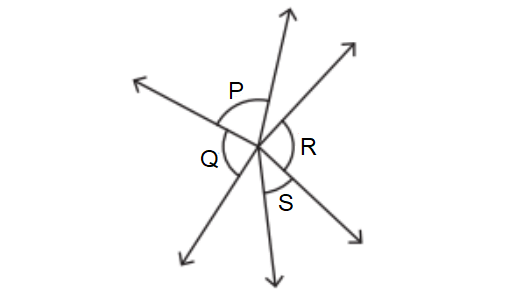
Question 3 :
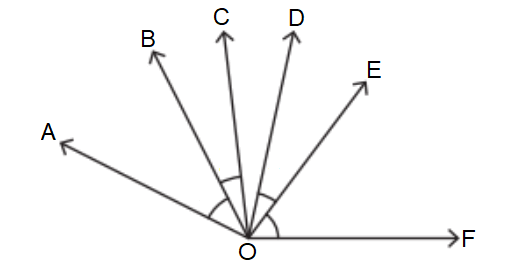
Question 4 :
In the diagram shown below, if ∠XYZ is a right angle, find the value of a.
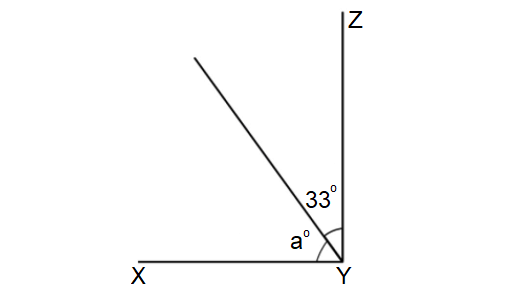
Question 5 :
In the diagram shown below, if ∠ABC is a right angle, find the value of x.
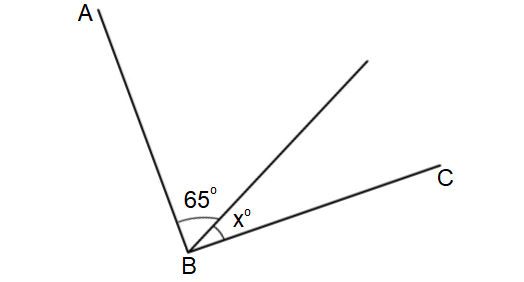
Question 6 :
In the diagram shown below, if ∠EFG is a straight angle, find the value of x.
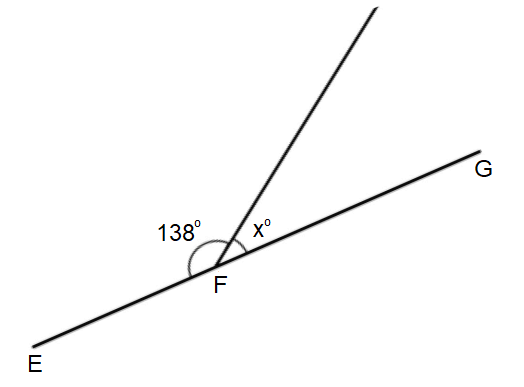
Question 7 :
In the diagram shown below, if ∠WXY is a straight angle, find the value of k.
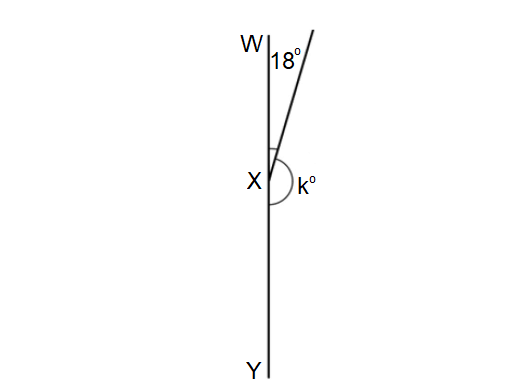
Question 8 :
In the figure given below, if ∠PQR is a straight angle, find the value of y.
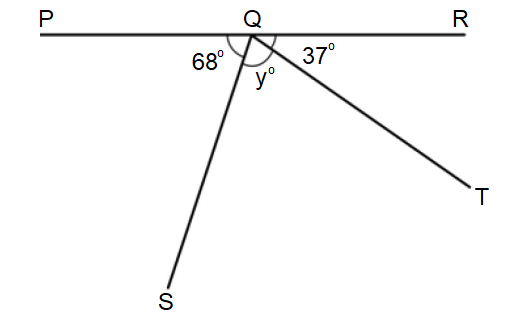
Question 9 :
In the figure given below, if ∠JKL is a straight angle, find the value of z.
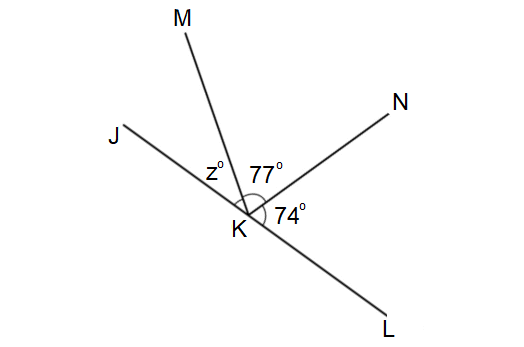
Question 10 :
In the diagram shown below, ABCD is a rectangle. Without using a protractor, find m∠EBD.
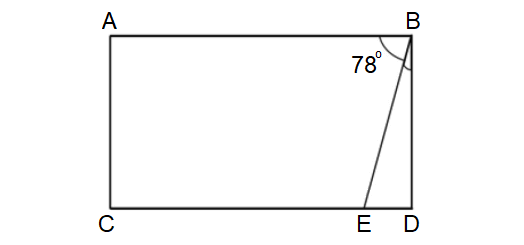
Question 11 :
The two adjacent angles are complementary. If the first angle is 3° less than twice the second angle, find the two angles.
Question 12 :
The two adjacent angles are supplementary. If the second angle is four times the sum of the first angle and 5°, find the two angles.

Answers
1. Answer :
If two angles have a common vertex and a common side, then they are adjacent angles.
Example :

In the diagram shown above, 43° and 57° are adjacent angles.They have the common vertex A and common side AC.
2. Answer :
∠P and ∠Q
∠R and ∠S
3. Answer :
∠AOB and ∠BOC
∠DOE and ∠EOF
4. Answer :
In the diagram shown above, a° and 33° are adjacent angles and they add up to m∠XYZ.
a° + 33° = m∠ABC
Given : ∠XYZ is a right angle. Then, m∠XYZ = 90°.
a° + 33° = 90°
Subtract 33° from both sides.
(a° + 33°) - 33° = 90° - 33°
a° + 33° - 33° = 57°
a° + 0° = 57°
a° = 57°
The value of a is 57.
5. Answer :
In the diagram shown above, x° and 65° are adjacent angles and they add up to m∠ABC.
x° + 65° = m∠ABC
Given : ∠ABC is a right angle. Then, m∠ABC = 90°.
x° + 65° = 90°
Subtract 65° from both sides.
(x° + 65°) - 65° = 90° - 65°
x° + 65° - 65° = 25°
x° + 0° = 25°
x° = 25°
The value of x is 25.
6. Answer :
In the diagram shown above, 138° and x° are adjacent angles and they add up to m∠EFG.
138° + x° = m∠EFG
Given : ∠EFG is a straight angle. Then, m∠EFG = 180°.
138° + x° = 180°
Subtract 145° from both sides.
(138° + x°) - 138° = 180° - 138°
138° + x° - 138° = 42°
x° = 42°
The value of x is 42.
7. Answer :
In the diagram shown above, k° and 18° are adjacent angles and they add up to m∠WXY.
k° + 18° = m∠WXY
Given : ∠WXY is a straight angle. Then, m∠EFG = 180°.
k° + 18° = 180°
Subtract 18° from both sides.
(x° + 18°) - 18° = 180° - 18°
x° + 18° - 18° = 162°
x° + 0° = 162°
The value of x is 162.
8. Answer :
In the figure above, ∠PQS and ∠SQR are adjacent angles and they add up to m∠PQR.
m∠PQS + m∠SQR = m∠PQR
Given : ∠PQR is a straight angle. Then, m∠PQR = 180°.
m∠PQS + m∠SQR = 180°
m∠PQS + m∠SQT + m∠TQR = 180°
Substitute m∠PQS = 68°, m∠SQT = y° and m∠TQR = 37°.
68° + y° + 37° = 180°
y° + 105° = 180°
Subtract 105° from both sides.
(y° + 105°) - 105° = 180° - 105°
y° + 105° - 105° = 75°
y° + 0° = 75°
y° = 75°
The value of y is 75.
9. Answer :
In the figure above, ∠JKM and ∠MKL are adjacent angles and they add up to m∠JKL.
m∠JKM + m∠MKL = m∠JKL
Given : ∠JKL is a straight angle. Then, m∠JKL = 180°.
m∠JKM + m∠MKL = 180°
m∠JKM + m∠MKN + m∠NKL = 180°
Substitute m∠JKM = z°, m∠MKN = 77° and m∠NKL = 74°.
z° + 77° + 74° = 180°
z° + 151° = 180°
Subtract 151° from both sides.
(z° + 151°) - 151° = 180° - 151°
z° + 151° - 151° = 29°
z° + 0° = 29°
z° = 29°
The value of z is 29.
10. Answer :
In the figure above, ∠ABE and ∠EBD are adjacent angles and they add up to m∠ABD.
m∠ABE + m∠EBD = m∠ABD
Since PQST is a rectangle, each interior angle is a right angle. Then, m∠ABD = 90°.
m∠ABE + m∠EBD = 90°
Substitute m∠ABE = 78°.
78° + m∠EBD = 90°
Subtract 78° from both sides.
78° + m∠EBD - 78° = 90° - 78°
m∠EBD = 12°
11. Answer :
Let x° be the second angle.
Then, the first angle is (2x° - 3°).
Given : The two adjacent angles are complementary.
(2x° - 3°) + x° = 90°
2x - 3 + x = 90
3x - 3 = 90
Add 3 to both sides.
(3x - 3) + 3 = 90 + 3
3x - 3 + 3 = 93
3x + 0 = 93
3x = 93
Divide both sides by 3.
x = 31
2x - 3 = 2(31) - 3
= 62 - 3
= 59
Therefore, the required angles are 31° and 59°.
12. Answer :
Let x° be the first angle.
Then, the second angle is 4(x° + 5°).
Given : The two adjacent angles are supplementary.
x° + 4(x° + 5°) = 180°
x + 4x + 20 = 180
5x + 20 = 180
Subtract 20 from both sides.
(5x + 20) - 20 = 180 - 20
5x + 20 - 20 = 160
5x + 0 = 160
5x = 160
Divide both sides by 5.
x = 32
4(x + 5) = 4(32 + 5)
= 4(37)
= 148
Therefore, the required angles are 32° and 148°.
Kindly mail your feedback to v4formath@gmail.com
We always appreciate your feedback.
©All rights reserved. onlinemath4all.com
Recent Articles
-
SAT Math Resources (Videos, Concepts, Worksheets and More)
Jan 20, 25 09:31 PM
SAT Math Resources (Videos, Concepts, Worksheets and More) -
Digital SAT Math Problems and Solutions (Part - 101)
Jan 20, 25 09:27 PM
Digital SAT Math Problems and Solutions (Part - 101) -
AP Calculus AB Problems with Solutions (Part - 6)
Jan 15, 25 07:19 PM
AP Calculus AB Problems with Solutions (Part - 6)
